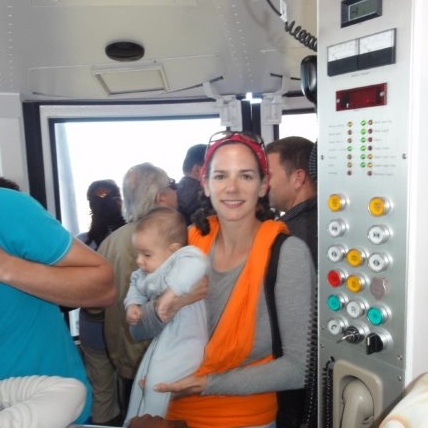News
The highs and lows of Cape Town’s cableway
Table Mountain is the emblem of Cape Town, and October marks the 90th anniversary of its aerial cableway (known colloquially as “the cable car”). Those who have visited from near and far have fascinating memories of this iconic adventure up the mountain.

TALI FEINBERG
In its nine decades of existence, there have been only a few mishaps, but no accidents or injuries.
Table Mountain itself is about 260-million years old. Stone Age people roamed its hills, and later the San and Khoi people called it Hoerikwaggo – Mountain in the Sea.
The cableway officially opened on 4 October 1929, and is part of the Table Mountain National Park and a World Heritage Site. It has transported more than 28 million people to the summit.
In the late 1870s, there was a proposal for a railway to be constructed as a means of getting to the summit. Then, a funicular railway was envisioned. However, it was only in 1926 that Norwegian engineer Trygve Stromsoe proposed the construction of a cableway.
He built a model of his idea and took it to Sir Alfred Hennessy, who got fellow investors Sir David Graaff and Sir Ernest Oppenheimer on board. Construction took two years on the rugged cliffs of the mountain.
The Barnett family has two legendary cable-car stories. The first occurred about 20 years ago, when Cecile Barnett, now in her 80s, her daughter, Lauren Dorfman, and her grandson, Greg Dorfman, decided to go up the cableway. The Dorfmans were visiting from Australia.
“Greg was about three or four years old. It was the old cable car – it was rectangular, and we all stood at the front looking over the city. Next to us was a young man with a haversack. We’re halfway up the mountain, when suddenly this young guy started climbing up on the windowsill. I got a fright; I thought maybe they were doing repairs. The next thing, he jumped out the cable car, and out of his pack came a parachute!” recalls Barnett.
Those were the days when the cable car still had open windows. “It was dangerous, because he could have been caught in the wire.
Greg, now in his 20s, still has clear memories of this moment in his childhood. “I remember seeing the paraglider jump out of the cable car. I have this image in my head of this guy jumping out and seeing a ‘balloon coming out of his head’ because that’s what I thought was happening.”
A few years later, Barnett, Dorfman, and her other children, Kim and Jaime, were back at the cable car, hoping for less drama this time. They were wrong. “We were going to see the sunset, and it was a full moon, so there were queues of people to go up. I believe there were 1 000 people on the mountain,” says Barnett . “It was about 20:00, and we stood in the queue to go down the cable car. Suddenly a woman said over a loudspeaker, ‘We have a problem.’ There was an electricity outage, so we had to wait to go down.”
Mothers and children were allowed to go into the children’s area in the cableway station called the “Dassie’s Den” while they waited. “They offered us drinks and food on the house.”
Barnett remembers that people started coming into the room. They told her that they had been about to go down in the cable car when the electricity went out. There was a tiny gap as the car had just started moving, and they had to evacuate or they would have been left hanging in mid-air.
Somehow, someone managed to find a piece of wood or an old wooden door, which was placed between the cable car and the side of the building, and everyone had to walk over it back onto the mountain. Staff told them, ‘Look into my eyes, don’t look down!’”
Jacqui Biess, the owner of the well-known Charly’s Bakery in Cape Town, remembers filming season two of the TV show Charly’s Cake Angels, which looks at the daily life and activities of the bakery. In one episode, they took their staff around Cape Town.
“The last thing we did was to go up Table Mountain. Most of our staff had never been up the mountain or on the cable car, even though they lived in Cape Town. We got permission to bring a live music band to the top of the mountain for the first time ever. Hot Water, a well-known South African band, played their song Wamkelekile which means “welcome” in Xhosa, and it was absolutely spectacular.”
Eden Saban, who is from Israel but lives in Johannesburg, has a rare harrowing story to share from February 2012.
She and her husband had gone up Table Mountain as a last activity with their young children before they headed for the airport. But, as the cable car went down, there was an issue with the alignment, and it was forced to stop. The car was suspended in the air while mechanics worked urgently to fix it.
“We were stuck dangling in the middle of the cables for about two hours, with a toddler and an infant. They couldn’t get the lines aligned, so the car couldn’t dock. The cable car was jam packed, so we had to stand all that time, while people around us were crying – probably in addition to our two babies! The windows were opened to get some air in. As the sun started to set, my husband prayed the Amidah, and right afterwards, the technicians got the cable car to work! When we were finally rescued, we rushed straight to the airport to catch our flight home, and caught it just in time!”
She says this experience is rare, and people should enjoy the cableway as a unique Cape Town experience. However, she plans to hike up the mountain if she visits again!